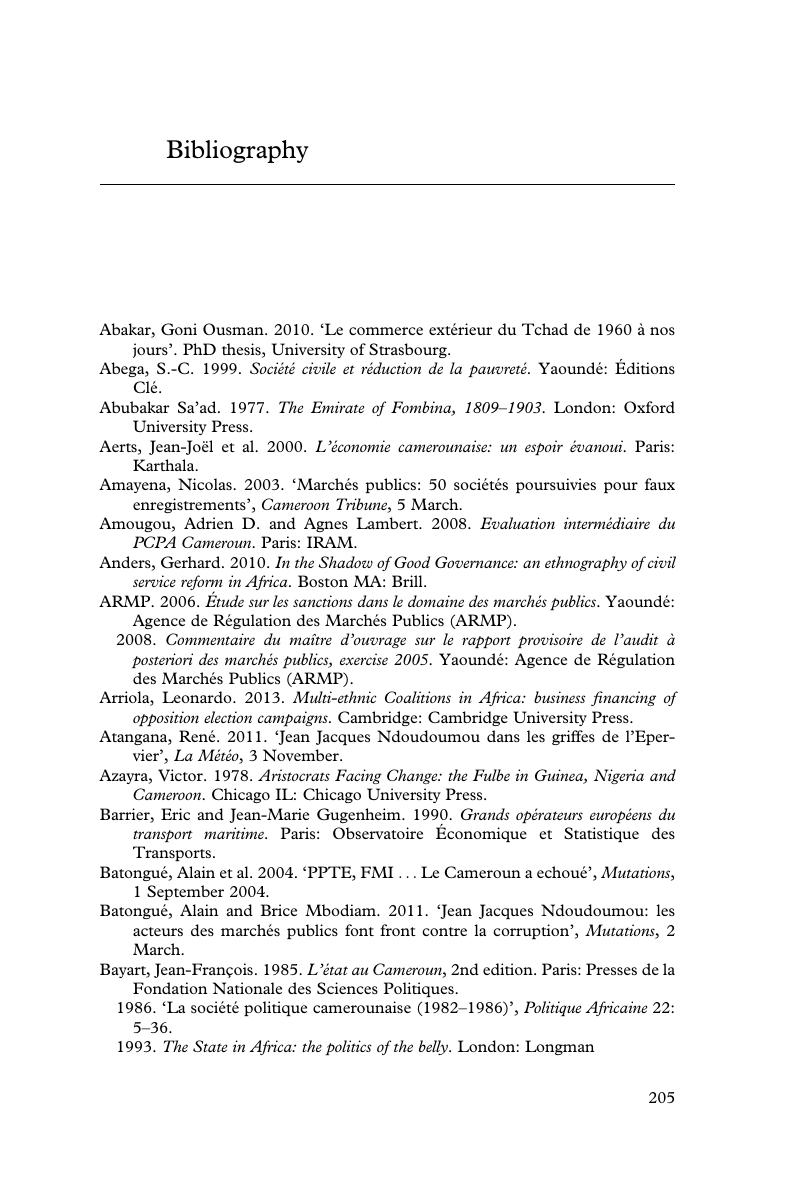Book contents
- Doing Business in Cameroon
- The International African Library
- Doing Business in Cameroon
- Copyright page
- Contents
- Figures
- Maps
- Acknowledgements
- Abbreviations and acronyms
- Introduction
- 1 Making a living in Ngaoundéré
- 2 The ordering of public things
- 3 ‘Cattle saves the day’
- 4 On and off the road
- 5 Under the NGO label
- Conclusion: letting pass, letting go
- Bibliography
- Index
- Titles in the series
- References
Bibliography
Published online by Cambridge University Press: 17 September 2018
- Doing Business in Cameroon
- The International African Library
- Doing Business in Cameroon
- Copyright page
- Contents
- Figures
- Maps
- Acknowledgements
- Abbreviations and acronyms
- Introduction
- 1 Making a living in Ngaoundéré
- 2 The ordering of public things
- 3 ‘Cattle saves the day’
- 4 On and off the road
- 5 Under the NGO label
- Conclusion: letting pass, letting go
- Bibliography
- Index
- Titles in the series
- References
Summary

- Type
- Chapter
- Information
- Doing Business in CameroonAn Anatomy of Economic Governance, pp. 205 - 218Publisher: Cambridge University PressPrint publication year: 2018



